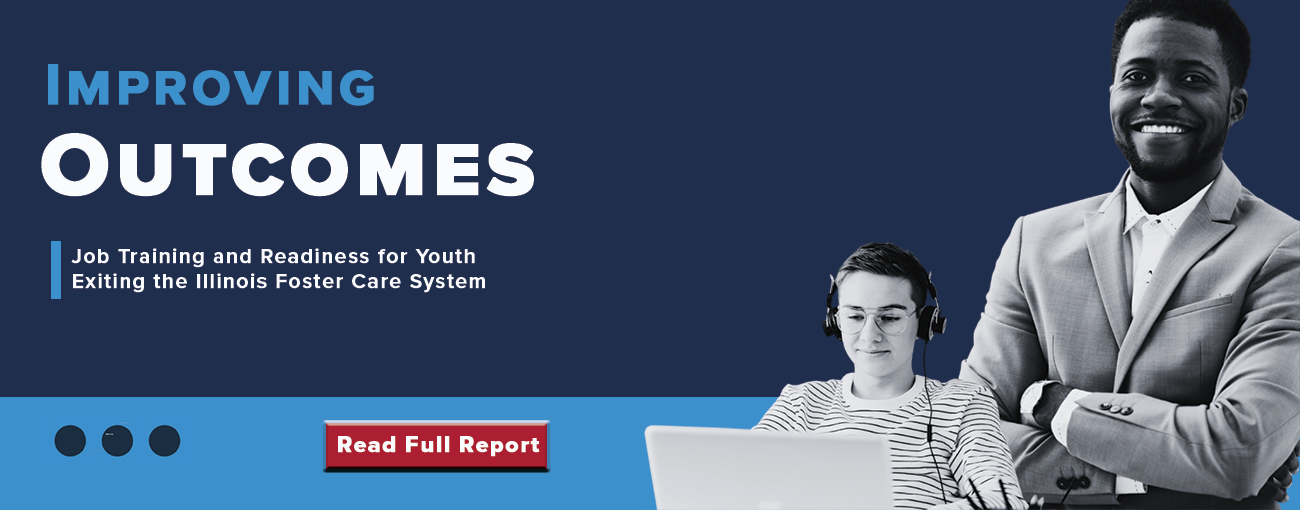Overview
There is not enough attention on supporting and uplifting youth exiting the foster care system in Illinois. Many young adults are not provided with the adequate information for possible career pathways or connections to state-based job readiness programs. Fifty percent of those that age out of foster care have received a high school diploma, and only three percent who leave the system attain a college degree. Roughly, 40 percent of foster youth who age out of the system at 18 will experience homelessness in the 18-month period after leaving. Consequently, a widening skills and outcomes gap persists for young adults who interact with state care facilities compared to their young adult counterparts.
In the past few years, the state of Illinois has worked towards becoming a leader in establishing equitable opportunities and access for all participants in the workforce. More specifically, Illinois has made efforts in establishing new workforce pipelines to elevate women and people of color through apprenticeships. Illinois Governor J.B. Priztker announced in August 2021 the creation of the Illinois Works Jobs Pre-Apprenticeship Program, a $10 million investment to ultimately diversify the building trades and construction industries. That September, the Pritzker Administration released an additional $4.4 million for career training grants for at-risk youth, and announced the prioritization of job readiness and training for all workers in the state. In 2022 and 2023, the Pritzker Administration has kept fueling investments in the workforce.
This report aims to inform and mobilize Illinois legislative leaders, state agencies, foster care facilities, case workers,and advocates to improve workforce outcomes for these young adults. Included are five recommendations to ensure we don’t leave any youth behind.
- A workforce development professional or job readiness program, staffed by a trained professional who can direct youth exiting foster care to employment programming or resources (such as child care financial assistance), should be housed in agencies, and must be able to meet the youths’ unique needs.
- Some statewide workforce navigators should focus specifically on supporting youth exiting state care facilities and other youth facing similar situations such as housing insecure youth or youth exiting the criminal justice system.
- The state should develop training to help skill current and new case workers and navigators to better understand the needs and assistance needed by youth exiting state care.
- Illinois should seek to further fund organizations, like Chicago Youth Opportunities, that directly seek to support foster youth and their needs with a trauma-informed approach.
- The state should harness the power of their current resources (such as the SPIDER database) to further centralize programming specific to foster youth and workforce development.
Illinois leaders and providers need to keep working to ensure that youth who interact with our foster care system have the adequate resources and pipelines to obtain a well-paying job and reach their full potential as they move into adulthood.


